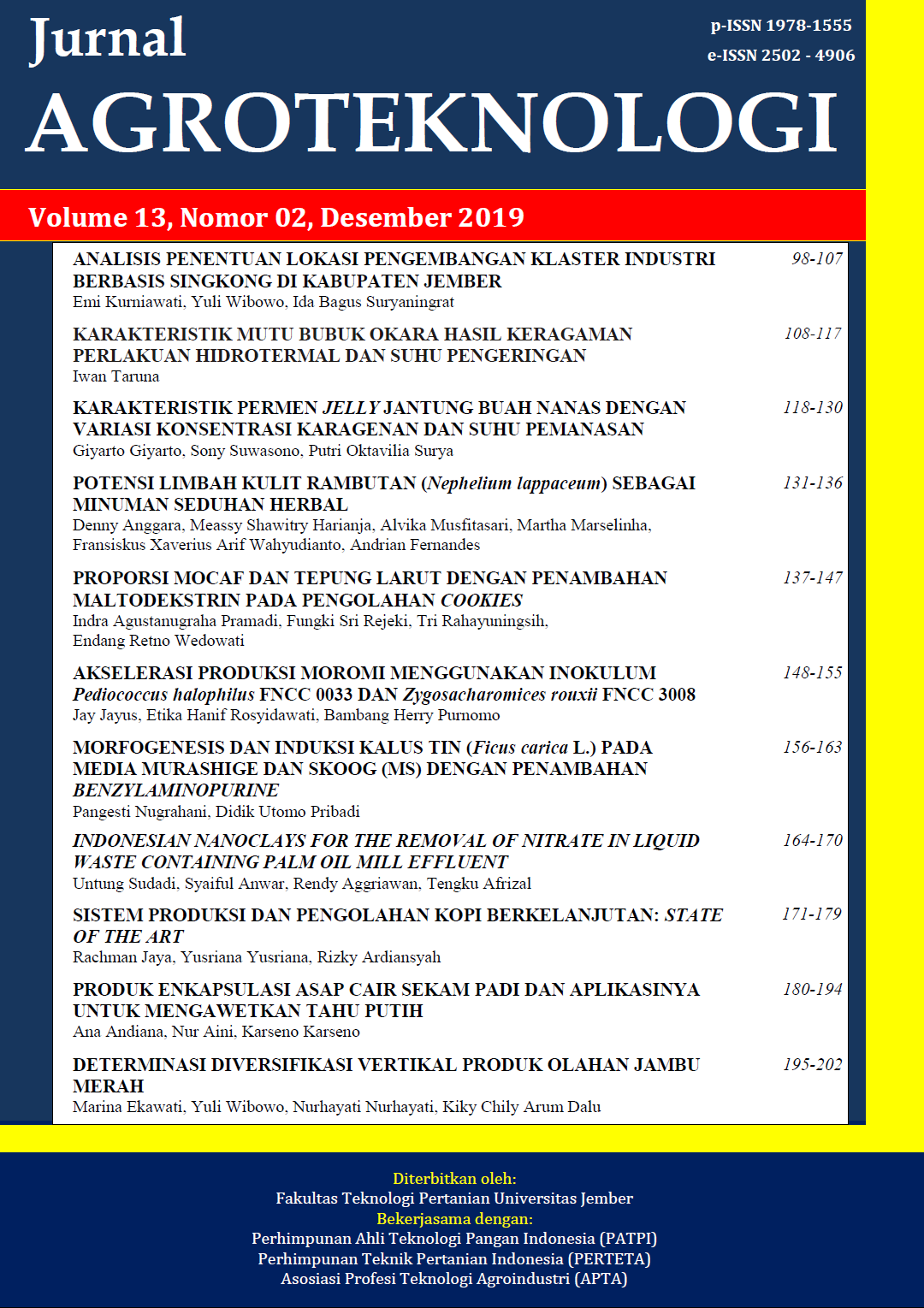PROPORSI MOCAF DAN TEPUNG LARUT DENGAN PENAMBAHAN MALTODEKSTRIN PADA PENGOLAHAN COOKIES
DOI:
https://doi.org/10.19184/j-agt.v13i02.14105Abstract
Cookies is snacks made from wheat flour. Wheat flour contains gluten which cannot be consumed by people with celiac diseases and autism. MOCAF is a modification of cassava flour that changes functional properties and can be used to substitute wheat flour. The use of MOCAF produces cookies that are hard-textured, so it is necessary to add arrowroot flour. Arrowroot flour was chosen because it contains low calories and non-gluten. Maltodextrin was used as maker crispy and binder ingredients. The research aimed were to determine the effect of MOCAF and arrowroot flour proportion and maltodextrin addition to the cookies characteristics, and determine the best alternative cookies processing. This research used factorial randomized block design with two factors. First factor was MOCAF and arrowroot flour proportion (T) with three levels (T1=100%:0%, T2=95%:5%, T3=90%:10%) and second factor was maltodextrin concentration (M) with three levels (M1=2%, M2=4%, M3=6%). Parameters research were proximate analysis, calories, yield, ability to swell, and organoleptic properties. The alternative selection used Expectation Value method. The results showed that there were no interactions between treatments on all research parameters, T treatment was significantly different on all organoleptic parameters, M treatment was significantly different on yield, fat and carbohydrate content, organoleptic properties, and the chosen treatment was T2M3 with expectation value was 8.21.
Keywords: arrowroot flour, maltodextrin, MOCAF, non-gluten cookies
Downloads
Downloads
Published
Issue
Section
License
Jurnal Agroteknologi has CC-BY-SA or an equivalent license as the optimal license for the publication, distribution, use, and reuse of scholarly work. Authors who publish with this journal retain copyright and grant the journal the right of first publication with the work simultaneously licensed under a Creative Commons Attribution-ShareAlike 4.0 International License that allows others to share the work with an acknowledgment of the work's authorship and initial publication in this journal.
 JURNAL AGROTEKNOLOGI
JURNAL AGROTEKNOLOGI 








.png)
